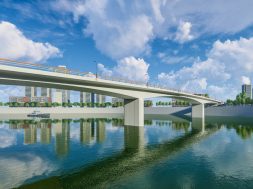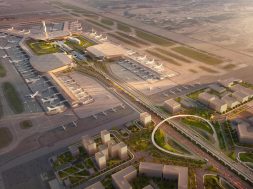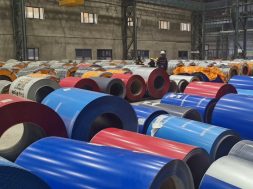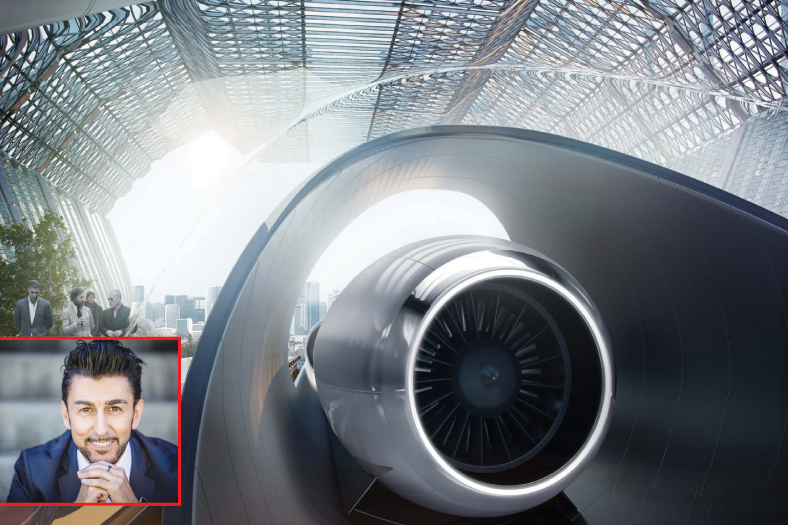BELIEVE IN YOURSELF
It was a rare opportunity for us sharing few moments withArchitect Karan Grover – one of the pioneers in sustainable building designing. From the basic of architecture to the influence of modern technology in today’s living: the master of ‘green’ architecture has inimitable views and opinions on every topic discussed. ‘Believe in yourself’ is his mantra for gen-next architects. Excerpts from his interview with Relin Hedly
How do you see the impact of advanced technology in today’s architecture?Most of the advanced technology is rooted in the past. One of the driving forces of these modern technologies is its inspiration from the past.
One such example, the Institute of Arab Studies building in Paris designed by Jean Nouvel where one of its facades is made entirely of mechanical oculi operated by photoelectric cells that automatically open and close in response to light levels is originally inspired by ‘jali’ which in India is mainly used to monitor and diminish heat and glare. So, although the technology is new, the idea is generated from the past – the only difference being its interpretation in a highly sophisticated medium and material.
What is your opinion about the adaptation of ‘modern’ technologies in India? Technologies are spreading very fast. Today, in India, the flow is much faster with the increasing activities in the field of green buildings. There is a cross current in the global profession – the architects and consultants from different countries are working in India and also a lot of Indian architects are designing projects across the world. Witnessing the increasing flow of ideas in the field of modern architecture, I am quite optimistic about the prospect of Indian architecture, benefitting greatly and quickly with what is happening around the world. Where do you see India stand in terms of adapting green technologies? With reference to green buildings and number of professionals contributing towards these technologies, I think America is the clear winner. However, if you have a look at the number of green buildings in the world, India is now second to America. We have been able to surpass Australia in the last 3 – 4 months which was ranked no. 2. But that hardly matters considering the population, density and size of Australia.
As far as India is concerned, almost 70 per cent of the buildings that we will need in 2030 have not been built. So, we have a great possibility of spearheading this movement further. The Government’s initiatives like the implementation of ECBC code by Bureau of Energy Efficiency will again be a major boost to the sector. I have just been asked to join a very illustrious panel on the National Building Code and we will incorporate a chapter on ‘Sustainability’. The idea here is to publish this chapter as an annex to the NBC, which means this will start affecting mainstream architecture that is expected to bring bigger change.
We suggest involving State Governments for stricter adherence of green building codes. We are trying to involve all municipal corporations to implement green building codes. In Baroda, we have already implemented municipal by-laws for mandatory provision of water harvesting in buildings. Therefore all buildings in Baroda have rain water harvesting. I believe if we can integrate these ideas into municipal and panchayat levels across the country, it would accelerate this movement.
With issues like water shortage, an attempt to address it by using cutting-edge technologies in the form of waterless urinals or showers with air technology helps to come to terms with our limited resources.
According to you, how is the road ahead?Awareness holds the key. The minute you are aware about the things that matter, the attitude towards looking at them undergoes tremendous change. Let’s start with small initiatives. During construction, by simply changing direction of a building from east-west to north-south we can reduce the energy spending manifold. But how many people are actually aware and ready to implement the same? A mindset exists that technology is the only answer. However if you ask me, it’s not technology but the design, material used in the building and the attitude to use it in the appropriate manner that will make the ultimate difference.
As an architect, what do you think are the primary objectives in making a green building? Rational use of resources that aid in consumption of energy should be the primary objective while making a green building. We should avoid living a lifestyle of waste. Generally, the ideas of success today is measured by our ‘desire for more’ and waste indiscriminately; which is not the right attitude in terms of utilising natural resources.
From the architectural point of view, while designing a building, one can reduce the consumption of energy by having roof gardening, north-south orientation, narrow building footprint, and bringing in maximum daylight. Therefore, we can make maximum use of natural resources such as 100 per cent daylight, recycle all used water, put off lights when not required; in short the whole idea is to live in moderation.
Does a green building need more space? If so, in a city like Mumbai where space is a greater constraint, can we afford such buildings?Green is not equated to space. The criteria and assessment of GRIHA Green Star or any other rating system is of space and not the size. Green buildings are designed with correct and sustainable use of spaces and technologies.
Do you suggest for having higher FSI in buildings?I have heard that something to this extent has been suggested in Haryana. According to me, this is not the viable solution. Ultimately, the idea is to consume less. I am not sure if FSI is the answer. I have a feeling that it has to be a mixture of many other things like there should be some incentive in terms of tax, revenues, but all these must be looked at in an integrated fashion.
What is your opinion about excessive use of glasses in today’s modern buildings? I find no meaning in it. It’s like equating progress and being modern to using more glass and steel. Glass has tremendous value if used aptly but the way its being used today is not at all a right approach. Constructing a building by simply putting glass all around is unscientific. On the contrary, it increases energy usage in terms of cooling and heating.
Scientifically, each direction determines and justifies an appropriate use of glass where north can be fully glazed and south can be partially glazed. If you tilt glass on the south façade between 11- 13 degrees, you avoid direct sunlight reaching the glass surface. East and West facades should have no glass. So, an architect will have to design each façade as a response to the climate for that façade.
Glass is a great idea if used intelligently. It is an important part that allows daylight and reduces energy spending; but not in an indiscriminate manner in which it is being used today.
Could you please elaborate on your dream project?We are doing a very interesting project for the Gujarat Energy Research and Management Institute (GERMI) which is in the process of being designed. There are two dream projects, one is in Gandhinagar which will be the first net zero building which means the building will produce as much energy as it needs, so the energy required from external resources will be zero.
The second is the Living Heritage Centre, a museum in Navi Mumbai. In a 200 acre park, we are constructing a building on 5 acres and putting the building inside the earth. Two mounds of green hide the building and by using the earth on top it is possible to reduce the heat to the building. As and when these two projects come up, they will be major frontrunners for green buildings not only in India but in Asia as well. We have laid the foundation for the museum and it should be completed in another two and a half years and the other project is also expected to be completed around the same time.
Is it really possible to design a ‘net zero building’? If so, then how?Mainly, by reducing drastically your energy needs through incorporating good design, passive cooling system, and appropriate technology. The difference between need and availability is provided by renewable energy.
Your advice to the upcoming architects “Pride and passion for the vocation with a determination to achieve something unique along with perseverance to produce buildings causing least damage to the earth” is my advice to the upcoming architects. Confidence in oneself is very important. At the age of 23 years, I was given a city which was 2000 years old to make it a World Heritage Site. It was sheer belief that I could do it and 30 years later I have achieved it. In the year 2000, we were told about the Platinum award which nobody else in the world had won. So we decided to work hard enough to win it. I would like to conclude by saying: “If you pursue your goal with utmost conviction and passion, success is inevitable”.
Cookie Consent
We use cookies to personalize your experience. By continuing to visit this website you agree to our Terms & Conditions, Privacy Policy and Cookie Policy.






